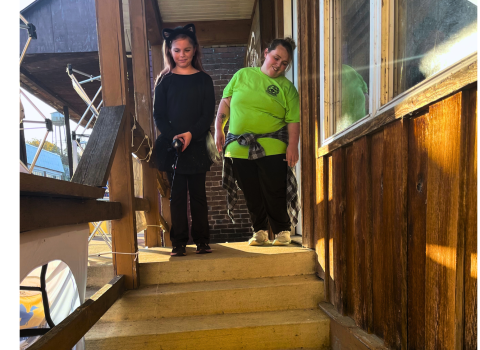The Alpena Fish and Wildlife Conservation Office – Detroit River Substation is located along the shores of the Detroit River, in Southeast Michigan. The office focuses on restoring native species, such as lake sturgeon and lake whitefish, detecting any new aquatic invasive species invasive species
An invasive species is any plant or animal that has spread or been introduced into a new area where they are, or could, cause harm to the environment, economy, or human, animal, or plant health. Their unwelcome presence can destroy ecosystems and cost millions of dollars.
Learn more about invasive species in the Great Lakes, including invasive carps, and habitat restoration. Given that Great Lakes fishery is a $7 billion industry, annually, the work the office does to protect these waters is of utmost importance. While much of the Alpena office work focuses on those fish-centric topics, creating and fostering meaningful connections between the communities we serve, and the environment is a major focus for our office.
Situated between the two major metropolitan areas, Detroit, Michigan and Toledo, Ohio, our office has the unique opportunity to serve a highly urbanized population. Annually, our office reaches approximately 2,500 children through our outreach events, and this number continues to increase as we focus more and more on prioritizing outreach. However, our outreach events in the past have lacked interactive experiences which engage youths and are typically limited to staff verbally communicating their experiences and knowledge to the public. Funds acquired through a small grant program have been utilized to augment our current program in an effort to educate children and young adults on fisheries management and conservation in the Great Lakes.
Partnering with the Girl Scouts of Southeast Michigan, Alpena co-led an outreach event entitled, A Day in the Life of a Fish Biologist. The focus of this event is to demonstrate what it’s like to be a fish biologist. This is accomplished through classroom activities and field work where we pull our sampling gear (fyke nets and minnow traps) and then identify the fish captured with the kids. During one of these events, we incorporated a new activity where we had participants create beaded keychains of a variety of native and non-native fishes. These keychains serve as a reminder of the diversity of fishes that are found in the backyards of these Scouts. The keychains also come with facts about each fish to pique their interests in each species and give them a better understanding of the role the species play in the Great Lakes.
While working on this project, participants began talking about their species and comparing them to those of their friends. Watching these girls get excited about fishes they could potentially see later in the day and hopefully during their future fishing excursions inspired by the A Day in the Life of a Fish Biologist program. We hope small activities like these, when tied into our larger outreach events, will inspire the next generation of conservationist, especially those that live in an urban environment. As the U.S. population continues to become increasingly urbanized, promotion of angling opportunities and environmental stewardship in these areas will become even more important.
To spark a curiosity in aquatic ecology and conservation, future outreach events will also include activities which demonstrate how we process fish (i.e., biological measurements and PIT tagging which allows us to track fish movement). Using plushies of native fishes and providing a life-size lake surgeon replica youth can hold to get a feel for what it’s like to wrangle one of these ancient fish will also be included as well as and banners highlighting the work each of our program’s conduct.
This work was supported by a grant from the Fish and Aquatic Conservation Fish Funds program. Participation in outdoor activities like hunting, fishing, hiking, and birding connect people with nature and empower the next generation of conservationists.



